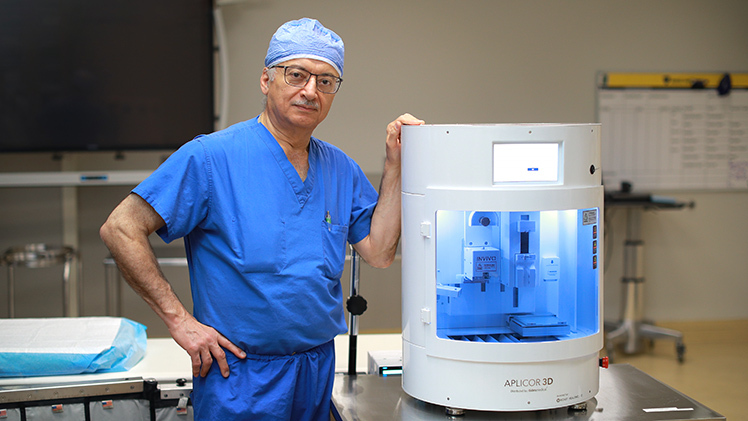Key Takeaways
- UToledo Health is one of the first healthcare systems in the U.S. to utilize 3D printed grafts made from patients’ fat cells for treating chronic wounds.
- This innovative procedure aims to enhance healing in patients with non-healing wounds, particularly those with underlying medical conditions.
- The technology has already shown promising results, with patients like Jeffrey Paul experiencing significant improvements in their wounds.
Revolutionary Treatment for Chronic Wounds
UToledo Health is pioneering the use of 3D printed grafts derived from patients’ fat cells to treat chronic wounds, a groundbreaking advancement in healthcare approved in the U.S. less than a year ago. Dr. Munier Nazzal, a vascular surgeon and chief of the Division of Vascular, Endovascular Surgery and Wound Care at UTMC, highlighted that while most wounds typically heal naturally, chronic wounds can persist for months or even years, severely affecting patients’ quality of life.
The new procedure leverages advanced bioprinting technology alongside specialized fat cells to stimulate healing. Initially, physicians utilize AI to create a detailed 3D model of the wound. A minimal amount of fat is then harvested from the patient, processed into bioink, and printed into a custom graft designed to fit the specific wound size and depth. Unlike traditional skin grafts, these 3D printed grafts serve to cover the wound and enhance the body’s natural healing processes.
“It’s almost like printing a puzzle piece,” Dr. Nazzal explained, emphasizing the precision of the grafts. Although the healing process is not instantaneous, it accelerates recovery compared to conventional methods. Chronic wounds, increasingly common due to an aging population and often linked to diabetes and vascular diseases, can lead to severe complications including amputations and life-threatening infections, impacting nearly 10 million Americans.
Traditional chronic wound treatments such as wound cleaning, tissue removal, and hyperbaric therapy remain essential, but the innovative 3D grafts have the potential to improve their effectiveness. Jeffrey Paul, one of the first patients to undergo the new procedure, had struggled with a non-healing lesion for months due to an autoimmune disorder. After opting for the procedure, he observed remarkable healing within two weeks, expressing confidence in the treatment’s potential for others.
The acquisition of the 3D graft printer, supplied by Tides Medical from Louisiana, was made possible through a generous donation from one of Dr. Nazzal’s former patients. The funding also supports the purchase of additional high-tech devices that will enhance wound care services at UToledo Health.
“Our commitment is to integrate the latest technology to tailor treatment plans to our patients’ specific needs,” Dr. Nazzal stated, expressing gratitude for the donor’s support in advancing wound care capabilities.
The content above is a summary. For more details, see the source article.















